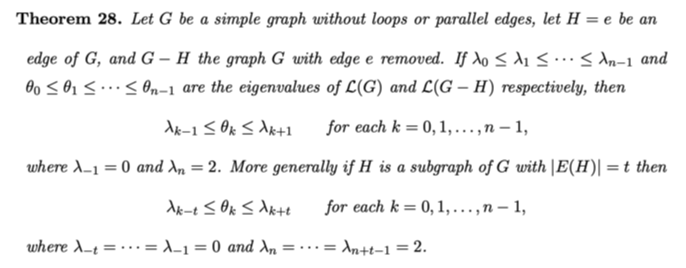What happens to eigenvalues when edges are removed?
The smallest eigenvalue can go up or down when an edge is removed.
For "down": $G=K_n$ for $n\ge 3$.
For "up": Take $K_n$ for $n\ge 1$ and append a new vertex attached to a single vertex of the original $n$ vertices. Now removing the new edge makes the smallest eigenvalue go up.
Both of these follow from the fact that the smallest eigenvalue of a connected graph with $n\ge 2$ vertices is $\le -1$ with equality iff the graph is complete.
It has something to do with whether the two corresponding eigenvector entries have the same or opposite sign, but I don't know if that relationship can be made precise.
Here's a statement from the book "Spectra of Graphs" by Brouwer and Haemers concerning the largest eigenvalue of the adjacency matrix. It implies that $\lambda_n \geq \mu_n$.
Proposition 3.1.1 The value of the largest eigenvalue of a graph does not increase when vertices or edges are removed.
This might be helpful, from Eigenvalues and structures of graphs
